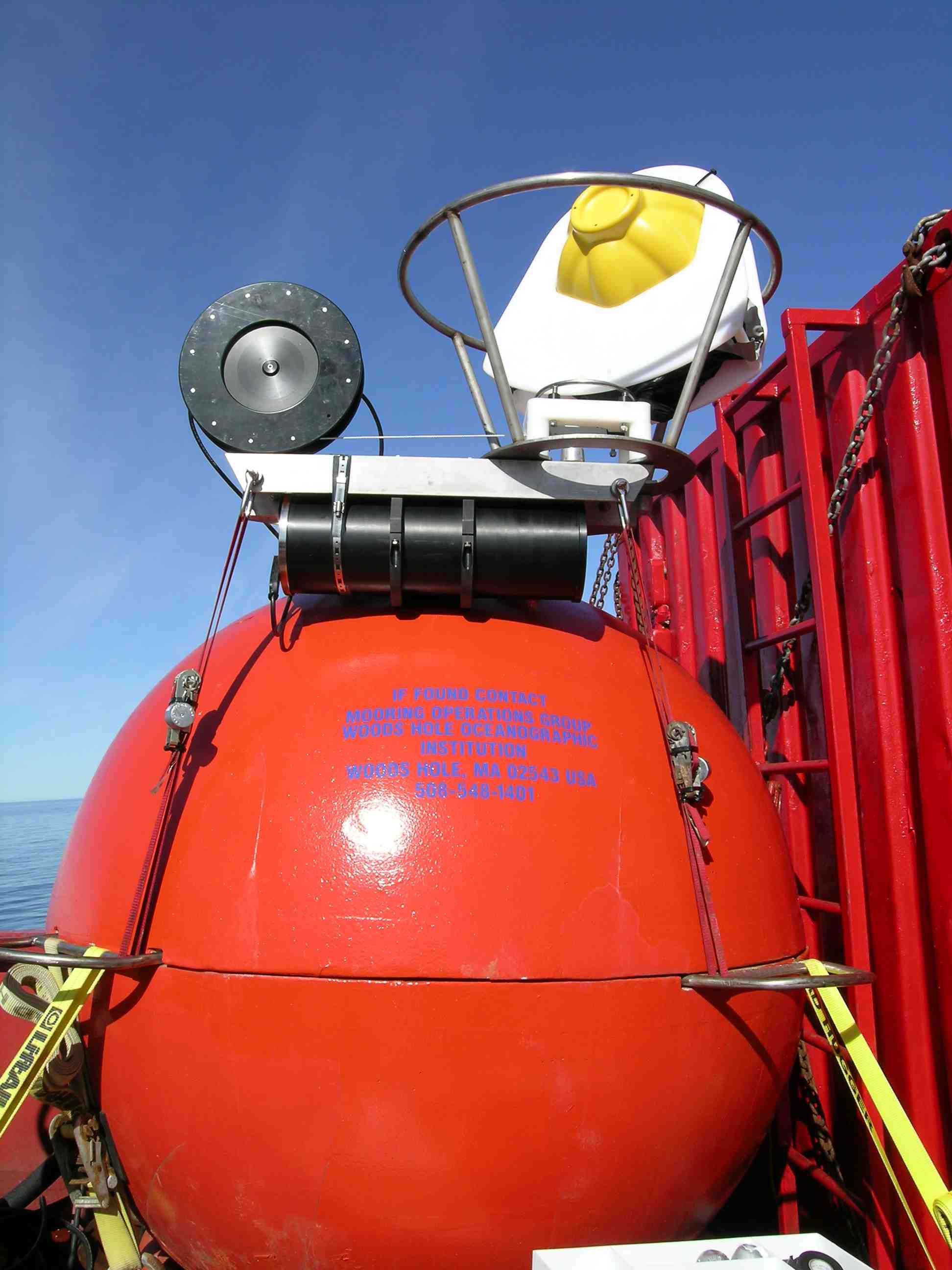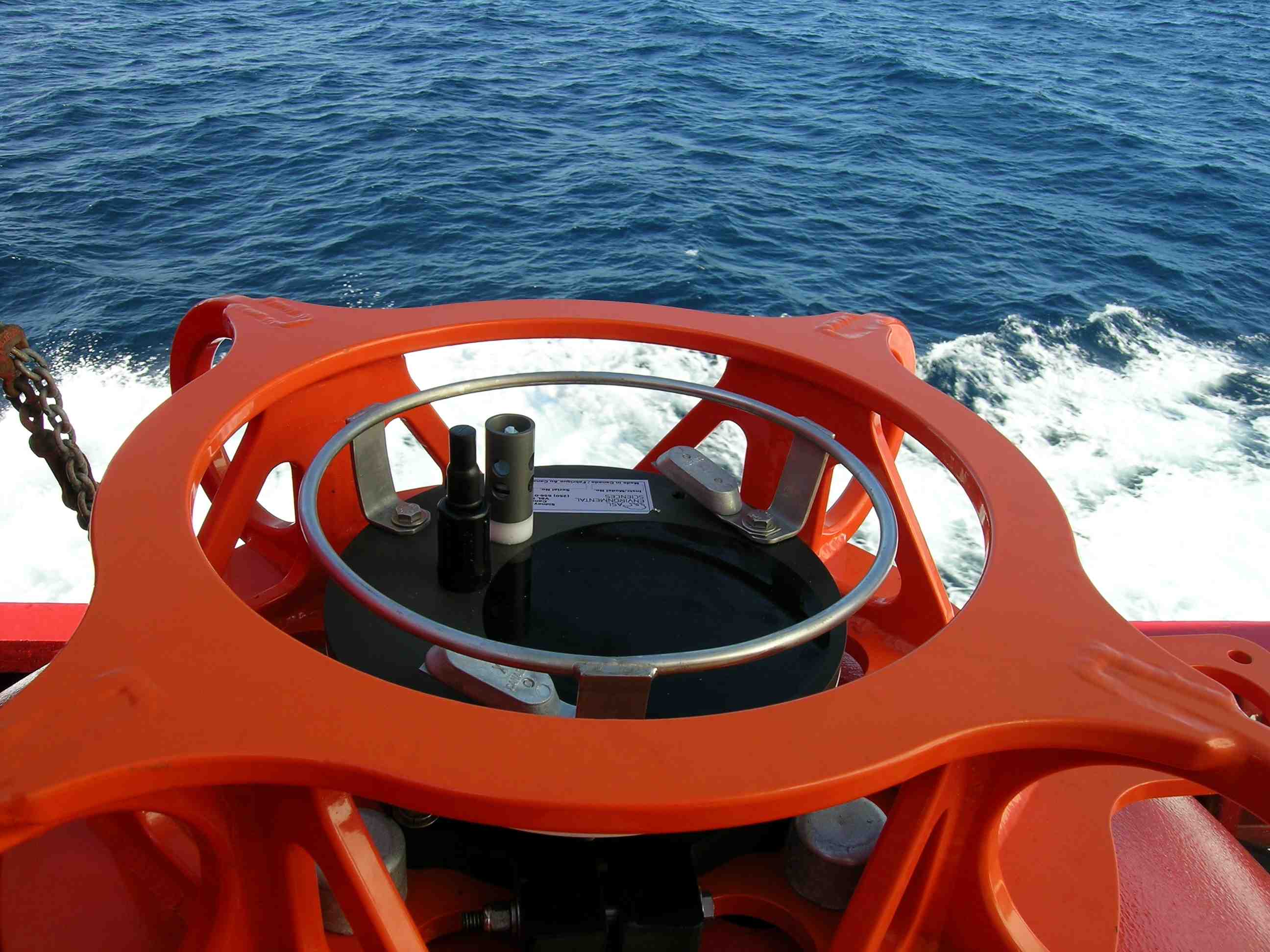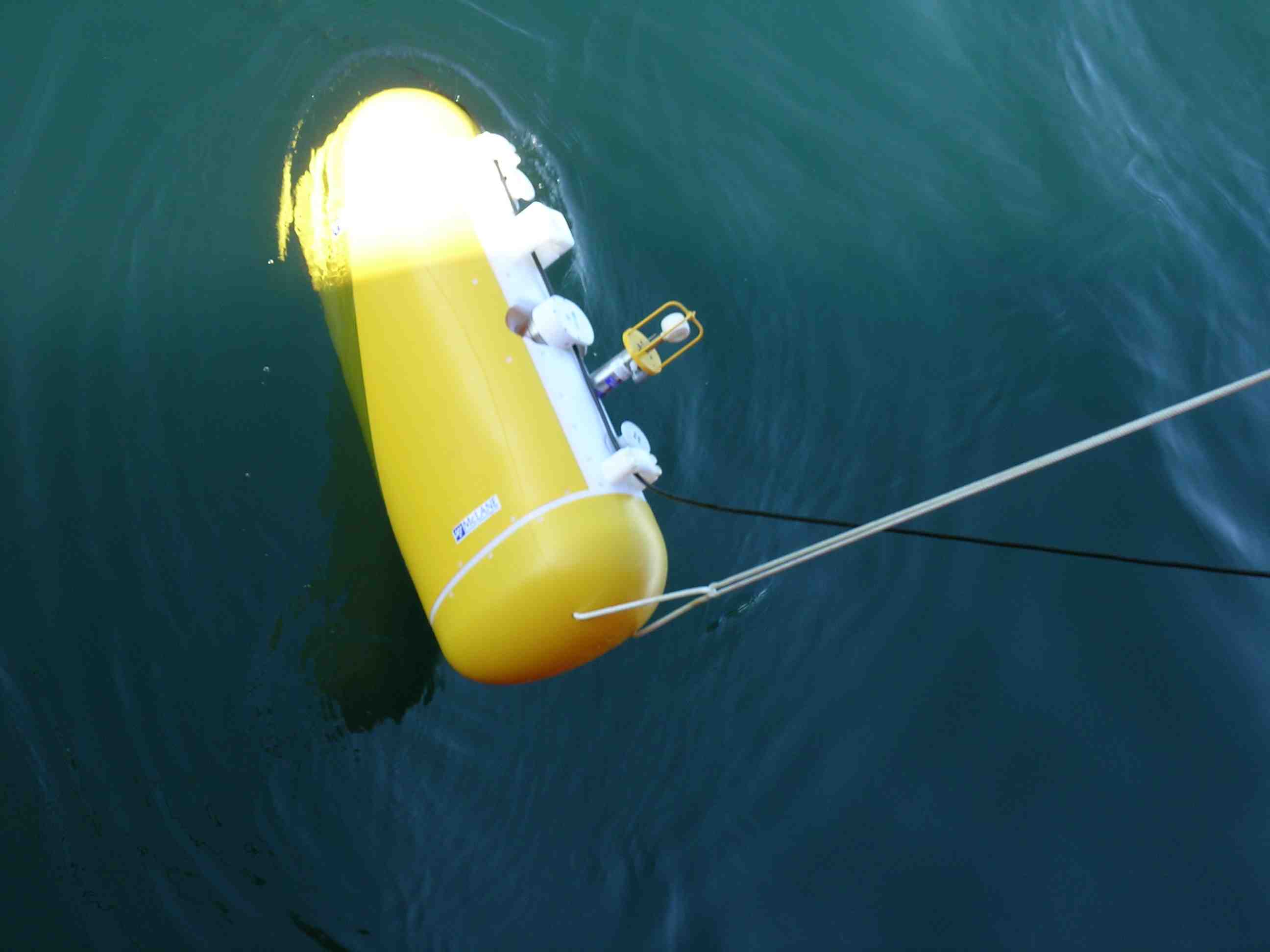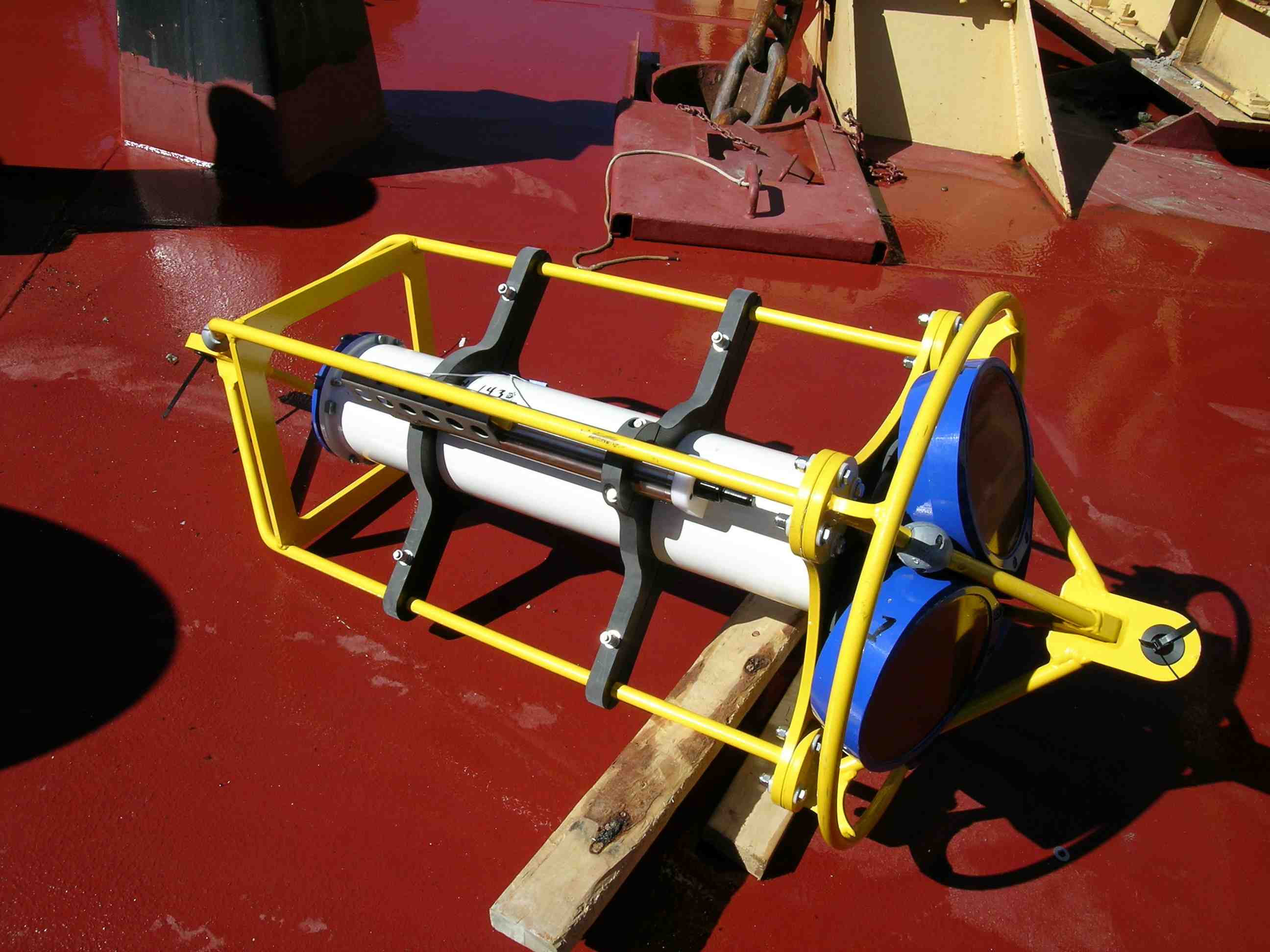
Temperature and
Salinity Under
the Ice
Measurements of
temperature and salinity all the way up to the surface are
indispensable to freshwater flux estimates. At the same time,
however,
ice conditions close to the surface prohibit leaving any
permanent
part of the mooring close to the sea-surface. To deal with this problem
engineers
at WHOI (Dan Frye and his group) have developed a new instrument: the
Arctic
Winch. This consists of a motored winch which periodically spools out a
profiler
(yellow and white in the photo) that will reach the surface and be
immediately
pulled back down. The system is mounted on the top float of the mooring
(positioned
some 50m below the surface).
 Sea-ice Thickness Sea-ice Thickness
Freshwater can flow both
in solid (ice) form as well as
liquid form, so flowing sea-ice must also be measured to obtain the net
freshwater
flux. Sea-ice thickness is obtained using an Upward Looking Sonar
(ULS).
At short intervals, the sonar emits an acoustic ping which will bounce
off
the bottom of the sea-ice and be recorded by the ULS. By measuring the
travel
time for the ping, one can estimate the distance between the sonar and
the
bottom of the sea-ice and, by knowing the position of the sea-surface,
one
can then estimate the ice-thickness.
 Temperature
and Salinity Below 50m Temperature
and Salinity Below 50m
Away
from the danger of encounters
with ice, a moored profilers is used to measure temperature and
salinity
throughout the rest of the watercolumn. This instrument walks up and
down
the mooring cable, several times a day, recording temperature and
salinity
as it moves.
 Water and Ice Velocity Water and Ice Velocity
Finally,
the velocity of sea-ice and of the entire water
column is measured using an Acoustic Doppler Current Profiler (ADCP).
The
velocity throughout the water column is obtained by measuring the
Doppler
shift of pings emitted by the ADCP as they reflect off moving particles
in
the water.
|



